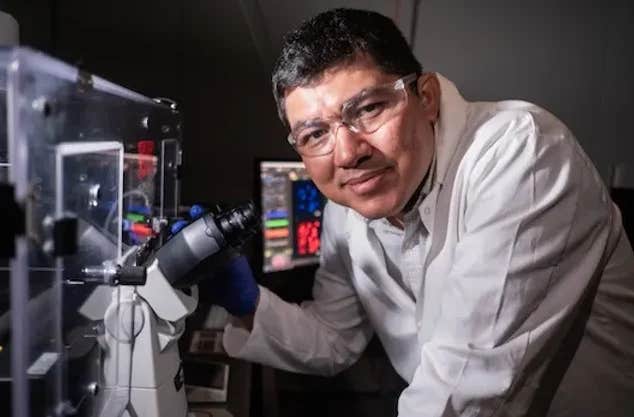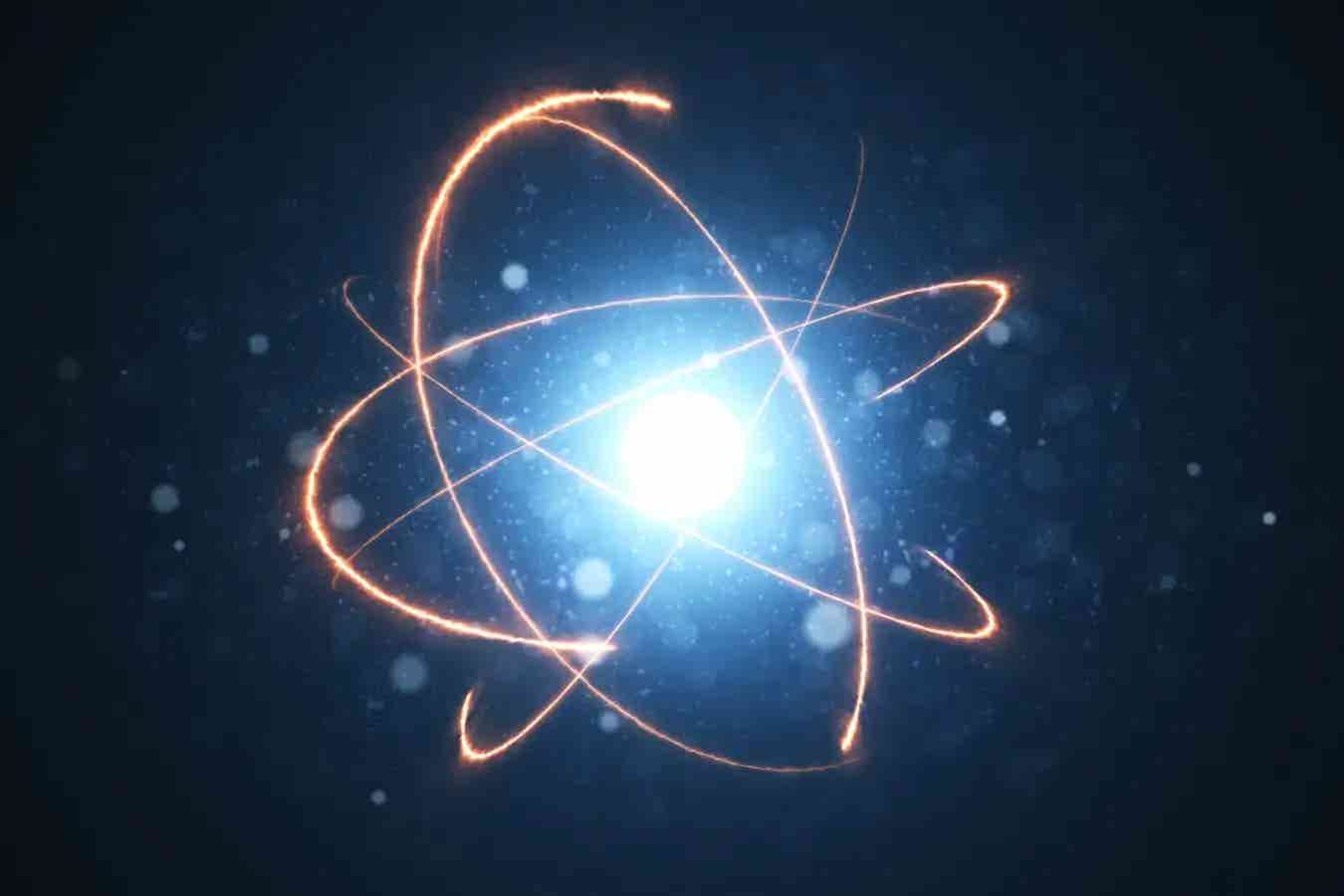Lifesaving new cancer treatment destroys 99% of cancer cells
Researchers have unveiled a remarkable approach to combat cancer cells, inspired by The Beach Boys’ classic hit, “Good Vibrations.”

Their method utilizes molecular vibrations triggered by near-infrared light to destroy cancerous cells with remarkable efficiency. Lead author Ciceron Ayala-Orozco. (CREDIT: Jeff Fitlow/Rice University)
In a groundbreaking discovery, scientists from Rice University and their collaborators have unveiled a remarkable approach to combat cancer cells, inspired by The Beach Boys' classic hit, "Good Vibrations."
This innovative technique harnesses the power of molecular vibrations induced by near-infrared light to obliterate cancerous cells, offering new hope in the fight against cancer.
The research team's breakthrough centers on the utilization of a small dye molecule commonly employed in medical imaging. When subjected to near-infrared light, these molecules exhibit synchronized vibrations, referred to as plasmons, which lead to the rupture of cancer cell membranes.
Their findings, published in Nature Chemistry, revealed a stunning 99 percent effectiveness in eliminating lab-cultured human melanoma cells, with half of the melanoma-afflicted mice experiencing complete remission after treatment.
Rice chemist James Tour coined these remarkable molecules as "molecular jackhammers." His team had previously employed nanoscale compounds, equipped with light-activated paddle-like chains of atoms, to penetrate and dismantle the outer membranes of infectious bacteria, cancer cells, and drug-resistant fungi.
Unlike the Nobel laureate Bernard Feringa's molecular motors, which rely on a different mechanism, these molecular jackhammers operate at speeds over a million times faster and respond to near-infrared light, an achievement deemed unprecedented.
Related Stories
One of the key advantages of near-infrared light is its ability to penetrate deep within the human body without causing harm to tissues. Tour explained, "Near-infrared light can go as deep as 10 centimeters (~ 4 inches) into the human body as opposed to only half a centimeter (~ 0.2 inches), the depth of penetration for visible light, which we used to activate the nanodrills. It is a huge advance."
The molecular jackhammers responsible for this medical breakthrough are aminocyanine molecules, a class of synthetic dyes extensively used in medical imaging.
These molecules, despite their simplicity, have remarkable biocompatibility, water stability, and an affinity for attaching to the outer lipid layer of cells. Yet, until this study, their potential to function as plasmons had gone untapped.
Lead author Ciceron Ayala-Orozco explained, "Due to their structure and chemical properties, the nuclei of these molecules can oscillate in sync when exposed to the right stimulus. I saw a need to use the properties of plasmons as a form of treatment and was interested in Dr. Tour's mechanical approach to dealing with cancer cells. I basically connected the dots."
The researchers identified that the molecular plasmons had a near-symmetrical structure with an arm that aided in anchoring the molecule to the lipid bilayer of the cell membrane, contributing to their effectiveness.
Crucially, the study established that this method of action does not fit into the categories of photodynamic or photothermal therapy. Ayala-Orozco emphasized, "This is the first time a molecular plasmon is utilized in this way to excite the whole molecule and to actually produce mechanical action used to achieve a particular goal ⎯ in this case, tearing apart cancer cells' membrane."
To further understand the molecular features responsible for this "jackhammering" effect, researchers at Texas A&M University led by Jorge Seminario conducted time-dependent density functional theory analysis.
Meanwhile, the cancer studies on mice were carried out in collaboration with Dr. Jeffrey Myers, professor and chair of the Department of Head and Neck Surgery at the University of Texas MD Anderson Cancer Center.
The discovery of molecular jackhammers opens a promising avenue in the ongoing battle against cancer, offering a novel approach that targets cancer cells at the molecular level.
With its remarkable efficiency and minimal invasiveness, this breakthrough could potentially revolutionize cancer treatment, providing renewed hope for patients and researchers alike. The "Good Vibrations" of science have indeed brought a new wave of optimism to the fight against cancer.
Note: Materials provided above by The Brighter Side of News. Content may be edited for style and length.
Like these kind of feel good stories? Get The Brighter Side of News' newsletter.
Joseph Shavit
Head Science News Writer | Communicating Innovation & Discovery
Based in Los Angeles, Joseph Shavit is an accomplished science journalist, head science news writer and co-founder at The Brighter Side of News, where he translates cutting-edge discoveries into compelling stories for a broad audience. With a strong background spanning science, business, product management, media leadership, and entrepreneurship, Joseph brings a unique perspective to science communication. His expertise allows him to uncover the intersection of technological advancements and market potential, shedding light on how groundbreaking research evolves into transformative products and industries.



